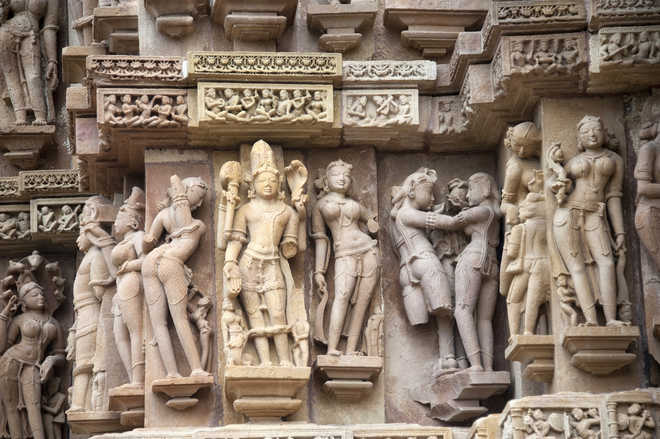
SEX AND POLITICS: Doniger has selectively quoted from the two texts to interpret that both Arthashastra and Kamasutra are "unscrupulous, duplicitous, astute, cunning, scheming" and recommend the use of black magic
Ashok Vohra
WENDY DONIGER is a well-known Indologist. She has translated from Sanskrit Manusmriti, The Kamasutra and among others is the author of The Hindus: An Alternate History. She has studied the Indian texts and traditions, deeply reflected and contemplated on them.
However, many scholars of Indian philosophy and religion believe that she does not have an in-depth grasp of the Indian culture and tradition. She is an outsider and represents an outsider’s view. Not having shared the same form of life as the insiders, her views are biased and tainted with the doctrines of lived Semitic religions.
Hinduism, both in its ideals and practices, is radically different from the Semitic religions. For example the term ‘dharma’ is multifaceted but in the context of purusharthas — the ends of human life, has been translated in the blurb itself of her latest book Beyond Dharma as ‘religion’ whereas it would be more appropriate to translate it as ‘regulative principle’. This fails to capture the subtlety of the key term dharma. Anyway, she has realised that dharma, artha and kama have no synonyms in the English language, and used these terms in their original form.
Her book Beyond Dharma is primarily a comparative study of Mallanga Vatsyayan’s Kamasutra — the science of erotics and Kautilya’s Arthashastra — the science of politics. From this comparative study she concludes that besides having the knowledge of animal husbandry, architecture, medicine, metallurgy, psychology, anthropology and sociology, ancient Indians had a deep understanding of grammar, logic and science of argument.
Thanks to the writings of modern Indian thinkers, the Western world has changed its opinion about India from it being a land of snake charmers, rope walkers and land of intellectual darkness to the land which had sophisticated telescopes and developed “techniques of arguments from evidence”.
By selectively quoting from the two texts she shows, that both Arthashastra and Kamasutra are “unscrupulous, duplicitous; astute, cunning, scheming” and unabashedly recommend the use of black magic. She, in the main, argues that “denial of dharma, the dissent against dharma, and at times the subversion of dharma” is the undercurrent of the two texts. Both the texts “have no sense of divine sanctions for the rules that they break in . . . a cavalier manner”.
She, without any substantiation, asserts that the lingua franca of ancient India was not Sanskrit. She categorically asserts that Sanskrit shastras “had a very limited direct effect on the actual lives of most people in ancient India but the ideas in the texts were diffused far beyond” the elite group of Sanskrit knowing persons. This claim is very flimsy as she herself admits that “to what extent these ideas were actually known is more difficult to ascertain”. If so, she should not have used the categorical assertion in the first place.
While contrasting Manusmriti, Arthashastra and Kamasutra she shows, “the Kamasutra largely ignores caste and class”. She asserts that the kind of sexual promiscuity allowed by Kamasutra to women “would have appalled Manu but did not interest Kautilya”.
As far as methodology of the texts is concerned, both Kautilya and Vatsyayana present their predecessors’ views as the straw men or purvapaksha and then develop their own doctrines. The difference, however, being that Kautilya criticises his predecessor’s theories and builds his doctrine on it. Vatsyayana, on the other hand, simply presents his predecessors’ views. In both the texts “a point of view is stated and defended”.
Schools of Indian philosophy are classified in two categories — the Astikas and Nastikas — orthodox and heterodox. Astikas are those who believe in the authority of the Vedas, for example, Nyaya, Vaisheshika, Samkhaya, Yoga, Mimamsa and Vedanta.
Nastikas are those who do not believe in the authority of Vedas. Charvakas, Jainas and Buddhists fall in this category. For some odd reason, Doniger regards Nastikas as ‘naysayers’ who do not believe in God. If she is right, even Mimamskas would be Nastika since they do not believe in the existence of God.
For millennia, the honesty and realism of Kamasutra and Arthashastra has attracted generations and continue to endear the scholars. The interest in these two treatises has intensified over the ages “because these remained relevant to the great intellectual legacy of India” and have a direct bearing on common man’s life.
Ridiculing those who make outlandish claims about the modern scientific theories, inventions and discoveries being available in the Vedas and attempt replacement of “genuine science with ludicrous religious science”, she traces its reasons as follows — First, because “the Vedic language is so archaic that only a few priests and scholars know what’s in the Vedas well enough to contradict anyone who cites the Vedas as their authority” and second, Vedas being oldest have a religious authority.
The book is well-researched and written in a lucid style. Many narratives from ancient Indian texts make it interesting read. Once again Wendy Doniger has proved that right or wrong, she cannot be ignored.



























